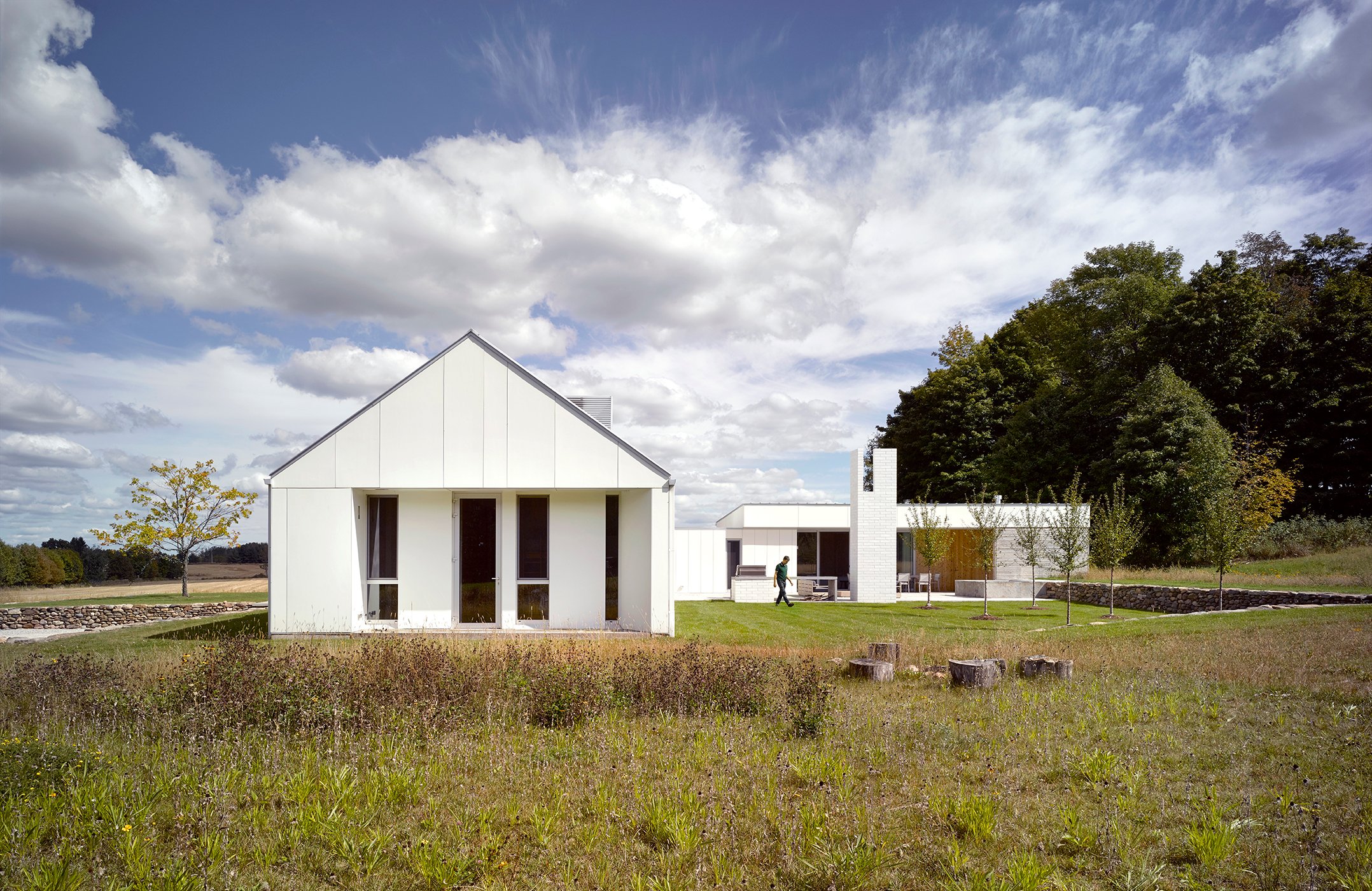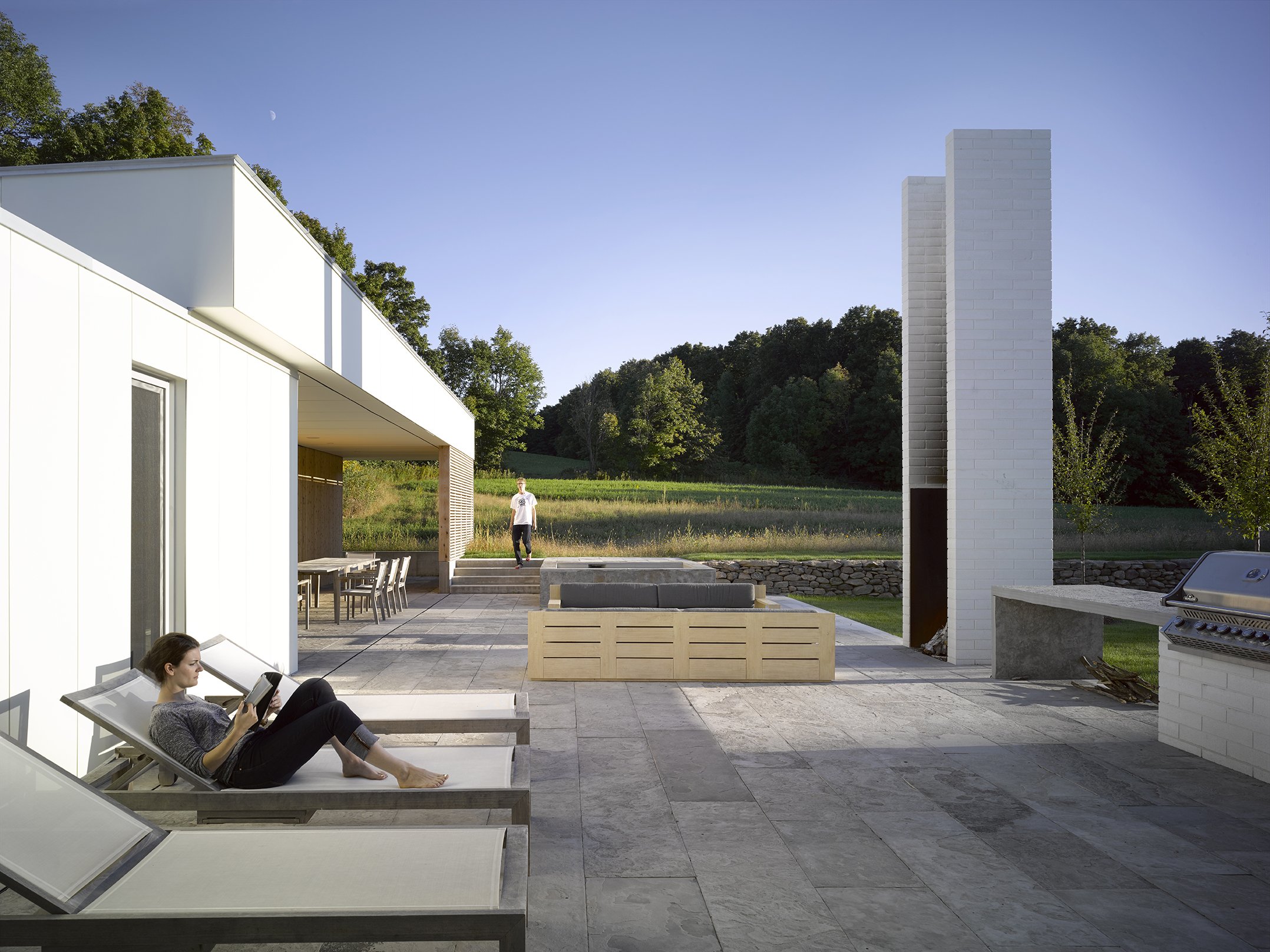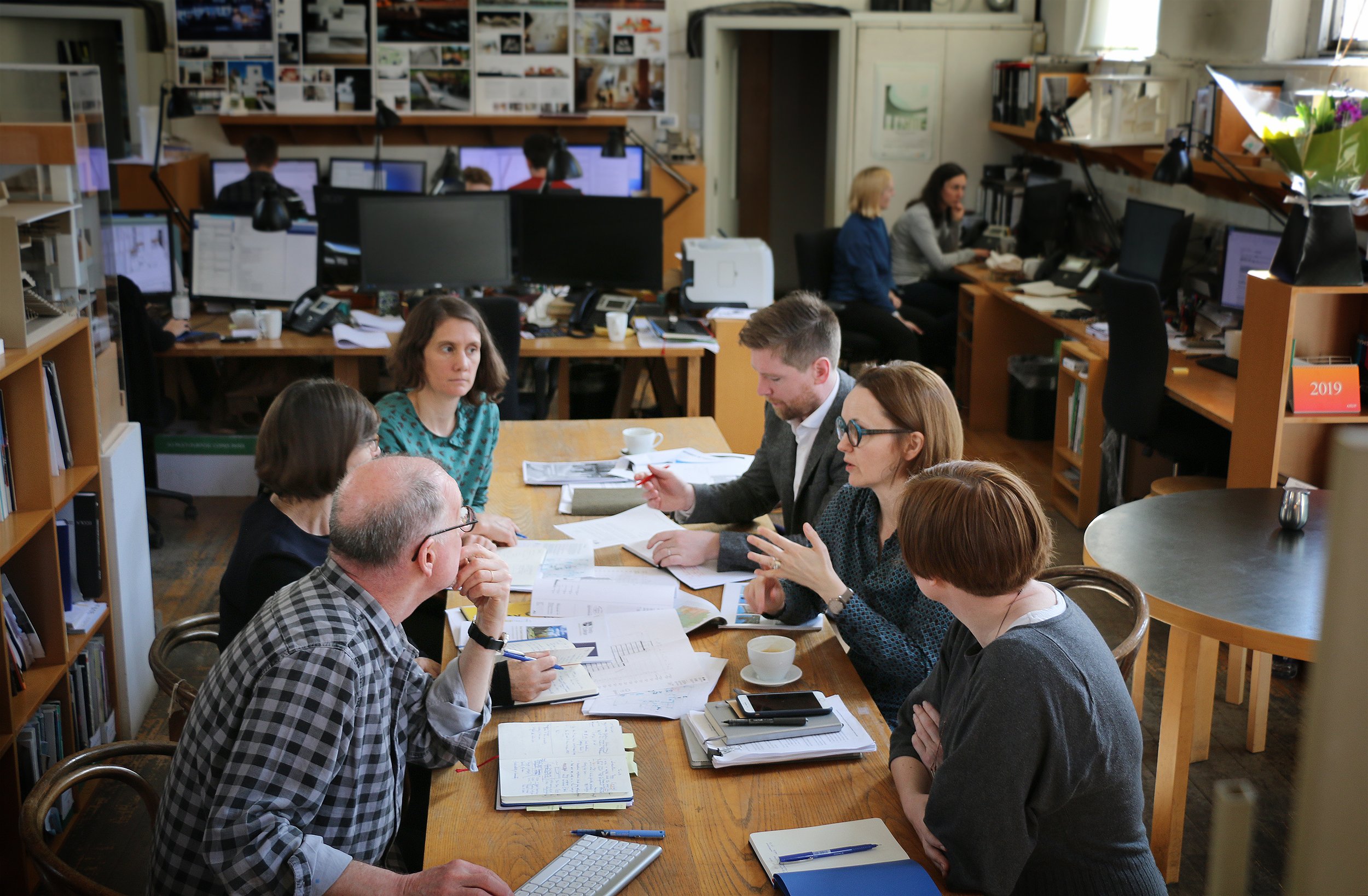Collective Imagination: Superkül's Meg Graham on Trusting Your Experience and Investing in People
By Julia Gamolina
Widely respected within Canada’s architecture and real estate communities, and known for her design acumen, rigour, and hands-on approach, Meg co-leads Superkül’s thriving practice, overseeing the firm’s residential, commercial, academic, institutional, and mixed-use projects. A mentor and design advocate, Meg has taught architecture at the University of Toronto since 2001, is Co-Chair of the City of Toronto Design Review Panel, and sits on numerous boards, panels, and juries. She received a Bachelor’s from the University of Waterloo, winning the AIA Gold Medal in her thesis year, and holds a Master in Design Studies from Harvard University’s Graduate School of Design. In her interview, Meg talks about spatial imagination and some of the most challenging moments in her career, advising those just starting their careers to learn as much as they can from others.
JG: Tell me about your foundational years - where did you grow up and what did you like to do as a kid?
MG: As a child growing up in Mississauga, one of Toronto’s largest suburbs, I was a voracious reader and spent a lot of time in my head. We didn’t live in a neighbourhood with lots of other children, so my sister and I were responsible for dreaming up our own fun. My mother, who probably should have been an engineer but was not encouraged to pursue that kind of career, taught us to make things with our hands — model cars, clothes, art — and ultimately use our spatial imagination. By all accounts, I was a relatively quiet and observant kid. I only really came into my more gregarious self when I was a bit older.
Compass House in Mulmur, Ontario. This LEED Gold-Certified design prioritizes natural daylight, passive ventilation, and high insulation values; an in-ground geothermal system improves the home’s already exceptional energy performance. Photography by A-Frame Studio.
Compass House in Mulmur, Ontario. The home consists of perpendicular wings that intersect and open onto a secluded courtyard and plunge pool. The courtyard’s fireplace and soaring chimney offer a vertical counterpoint to the home’s more horizontal, low-slung profile. Retaining walls, constructed with fieldstone found on the property, provide a natural plinth for the house, grounding it in the land.
What did you learn about yourself in studying architecture?
Unlike some of my peers, I came to architecture and design late. Initially, I was pursuing a Liberal Arts degree at McGill University. That first year of undergrad was idyllic. I spent days with my friends, walking around Montreal, which felt like this magical city, and drawing and making — clothes, photography, graphic art, even a sculpture using bits of smashed windshield after my car was broken into. While it was all very wonderful and formative in many ways, I was also a bit aimless. The wake-up call came when my father told me it was time to get more serious about choosing a career path; he made it clear that his financial support wouldn’t go on indefinitely. Later that year, I visited one of my closest friends who was studying architecture at the University of Toronto. I met up with her in her Studio class, where she was working on a plan drawing of a winery on watercolour paper. I was flabbergasted, thinking “This could be work?” It was literally then and there that my career in architecture began.
When I transferred to the University of Waterloo to start my professional degree, I quickly realized how much I had to learn about drawing and construction. I was very determined. I applied myself rigorously and eventually persevered. And the reward was huge: developing the ability to draw spaces and buildings that only previously existed in my imagination was immensely gratifying and empowering. Looking back, I think I discovered a lot about what it means to be humble, stay curious, trust in your imagination, and dedicate yourself fully to something. These are still values I try to bring to my work every day.
“...we always try to find ways to push the envelope wherever we can. For us, that isn’t necessarily about executing grandiose design moves, but rather about building relationships with clients based on trust and mutual ambition.”
How did you get your start in the field?
While doing my degree, I interned at KPMB Architects in Toronto and was fortunate enough to return there after I graduated. It was a place full of remarkable people who were passionate about their work and gave it their all, making it an unbelievable place to learn. I cut my teeth working mainly on large institutional projects for universities and performing arts organizations, both in Canada and the U.S. But they were also intimate, detail-focused projects commissioned by clients who were as enthusiastic about what they did as we were about architecture. It solidified for me that while architecture wasn’t going to solve all of the world’s problems, it could, when done with conviction and in collaboration with passionate people, be transformational.
After a few years of working at KPMB, I was accepted into the Master in Design program at Harvard’s Graduate School of Design. I was over the moon. But the grant I needed to be able to afford the program fell through at the last minute, and I resigned myself to declining the offer of admission. When I asked the partners at KPMB if I could stay at the office, they instead offered to loan me the money. It was an extraordinary gesture, and one I will never forget. The year I spent at Harvard was one of the most transformational of my education. But the partners’ act was in some ways equally transformative. It taught me a very powerful lesson about what it means to invest in people and how simple acts of generosity and support can change the course of people’s lives.
Design competition charrette with Superkül and O’Donnell + Tuomey in Dublin, Ireland. Superkül regularly collaborates with firms across North America and Europe on projects and competitions.
Meg on a Superkül construction site with colleagues.
The Royal Ontario Museum in Toronto, Ontario. Superkül’s sinuous design for the ROM's washrooms combines the function of a counter with a flexible, ADA-compliant trough-style sink at two heights, integrating inclusive and fluid forms to enhance accessibility.
Tell me how your work evolved, and you with it.
With every new project that we take on, we always try to find ways to push the envelope wherever we can. For us, that isn’t necessarily about executing grandiose design moves, but rather about building relationships with clients based on trust and mutual ambition that enable us to to build beautifully, intelligently, and durably. We have been fortunate to work with clients who care deeply about their projects and put their faith in us, allowing us to experiment and flex our creativity. We take every opportunity to challenge ourselves to find new approaches to tackling constraints, whether they’re related to functionality, sustainability, or aesthetic objectives.
There is no doubt that the pandemic has also forced me to stretch as a leader in ways I never expected. It has been hands down the most difficult period of my career. But it has also confirmed for me what I consider to be most important about architecture: achieving some version of pure experience, whatever that might be. Beyond form or style, good design is about connecting people to each other and the environment; creating the conditions for ease, refuge, and community; and providing a perspective from which you can track the movement of the sun or the rhythms of the rustling trees. My objective with every project is always to find ways to do more with less. Knowing when to stop. And making everything as simple as possible, but not simpler.
Where are you in your career today? What is on your mind most at the moment?
Our practice is celebrating its twentieth anniversary this year. I’ve been approaching this milestone from a place of introspection and eagerness. Over two decades, we’ve grown from a four- to a forty-person firm. It’s been an exercise in stamina and perseverance, joy and disappointment, passion and exhaustion. Together with my partner, Andre D’Elia, we have navigated the obstacles of growing a practice by harnessing our respective strengths: his preternatural calm and good sense combined with my foresight and instincts. I’m pretty sure I won the lottery this time around. With our complementary styles, there is no doubt that, together, we are greater than the sum of our parts. In the twenty years that we have built our practice alongside our relationship and family, we have slowly created the conditions for a new generation of leaders to rise up within the firm. These will be the people who carry on the experiment we started. I get immense gratification from watching our staff develop professionally and getting to work with clients, colleagues, and consultants who are at the top of their game. I’ve reached a point in my life where I only want to work with people from whom I can continue to learn and with whom I share mutual admiration, compatibility, and a similar level of determination.
But as we turn twenty, I’m also feeling more incentivized than ever to do more, to be more accountable, especially with respect to sustainable design and construction. We have always, since the inception of the practice, been committed to building responsibly and implementing advanced construction technologies and materials in service of environmental performance, durability, and well-being. As we continue to confront the increasingly calamitous effects of climate change and do work in a city, Toronto, that suffers from insufficient infrastructure, a housing shortage, and urban design disconnected from the natural environment, I want to double-down on holistic approaches to sustainability that contribute meaningfully to economic, social, and environmental equity, diversity, and resilience.
“Learn as much as you can every day from those around you, knowing all the while that architecture is not about personal legacy; it’s a communal project to better the world.”
Looking back at it all, what have been the biggest challenges? How did you manage through a disappointment or a perceived setback?
Without a doubt, the biggest challenge of my career has been steering our practice through the pandemic. One of our clients, an entrepreneur who has launched a number of successful businesses over more than 30 years, recently told me that he felt like the pandemic was the MBA he never did. This sums up my experience as well. We became unexpectedly busier in the spring of 2020, at exactly the same moment our staff went remote. Keeping our employees connected, learning, and working effectively and happily, while each of them navigated different risk profiles and personal concerns, was a greater challenge than I ever could have imagined. This was of course concurrent with the need to redefine scopes on numerous projects in light of market volatility and rising costs, and successfully reshaping these projects to respond to our clients’ changing needs and budgets. All while our two school-aged children were suddenly at home, in the far-from-perfect world of online school, and different family members were experiencing various health challenges. Since the pandemic began, our work days go late into the evenings and bleed into the weekends. It has been a physical, emotional, and intellectual marathon.
I have learned a lot. The key is to take it one day at a time, while maintaining an eye on the horizon — the ever-present stabilizer. As Andre says, there is a solution for everything. It may cost money and take time, but we’ll figure it out.
What are you most excited about right now?
Having our employees back in the office full-time. I miss people’s faces, their energy, and their laughter. I miss sketching and troubleshooting together, and feeling inspired by watching people learn through osmosis and creative collaboration. I cannot wait to spend less time on Zoom.
Who are you admiring now and why?
I admire people who take pride in their work and their contributions to society, no matter their vocation, and who do so modestly and enthusiastically. People with courage, a clear sense of purpose, and who are comfortable in their skin. I’m lucky to share an orbit with a number of people like this, and they inspire me on a regular basis.
Aēsop Ala Moana in Honolulu, Hawaii. The design deploys material consistency, rhythmic repetition, and curved contours to evoke the sensation of being inside a clearing of taro stalks, sunlight filtering through their leaves. Photgraphy by Laure Joliet.
Living room of a private residence in Toronto, Ontario. The concrete overhang, which juts out from the south wall, carves out a cozy adjacent niche for reading, while a bay of west-facing windows offers sunset views of the tree-lined street. Photography by Doublespace.
What is the impact you’d like to have on the world? What is your core mission? And, what does success in that look like to you?
Put simply, I’d like to leave the world a little more beautiful and a little more connected than how I found it. For me, that amounts to making places that move people — spaces where people feel a little more at peace with themselves, their loved ones, their community, and the cosmos. It’s really no more complicated than that as an idea, although accomplishing those objectives in the context of a holistic approach to sustainability that amplifies social, economic, and environmental resilience and well-being is no small feat. But I’m a dreamer, and I believe that with enough dedication, a lot of compassion, and perhaps a bit of magic, you can achieve great things.
Finally, what advice do you have for those starting their career? Would your advice be any different for women?
Work hard, dig deep, and really commit. Keep your eyes, ears, and heart open, and your ego in check. Learn as much as you can every day from those around you, knowing all the while that architecture is not about personal legacy; it’s a communal project to better the world.
Architecture is about making inviting and inspiring spaces and places that answer present needs, but also anticipate those of the future. As designers, we make those places in collaboration with many other people — clients, colleagues, consultants, trades, contractors, stakeholders — sometimes numbering in the hundreds. It’s good to remember that we are always only but one small piece of the project. Practice humility and compassion, and give your unwavering attention to both the big picture and the details. And have fun. That goes for everyone, no matter their gender.
That said, there’s no question it still remains harder for women. Female staff comprise over 50% of our office, which is a significant point of pride for me. But no matter the strides we’ve made in this and other professions, women invariably have to work harder to balance everything, especially if they want children. The idea that we can achieve a perfect work-life balance is an illusion, and we do a disservice to other women by sugar-coating that reality. What we do have control over are the decisions we make. Sometimes you will find yourself in a position of needing to make a difficult decision related to either your career or your family, and it won’t always feel good. There’s no playbook for navigating these things. The important thing is to locate your inner compass and trust yourself. It’s perfectly reasonable — and important — to have high standards. But women are often much too hard on themselves and even sometimes on each other. Having high standards is not the same as beating yourself up. Not every opportunity will work out. We get knocked off the horse and need to get back on all the time, whether that’s as the principal of a firm or as a mother. Go easy on yourself.







